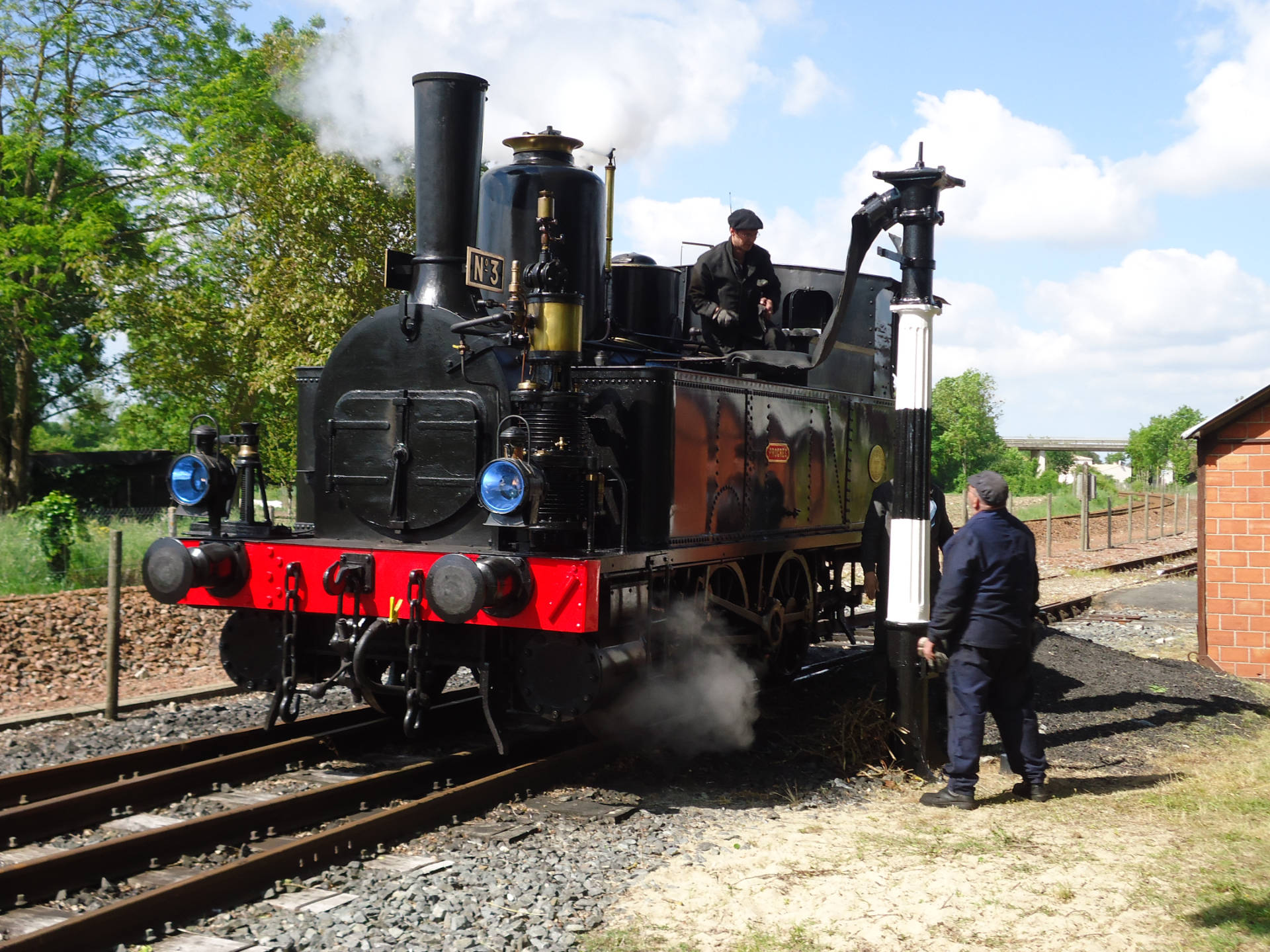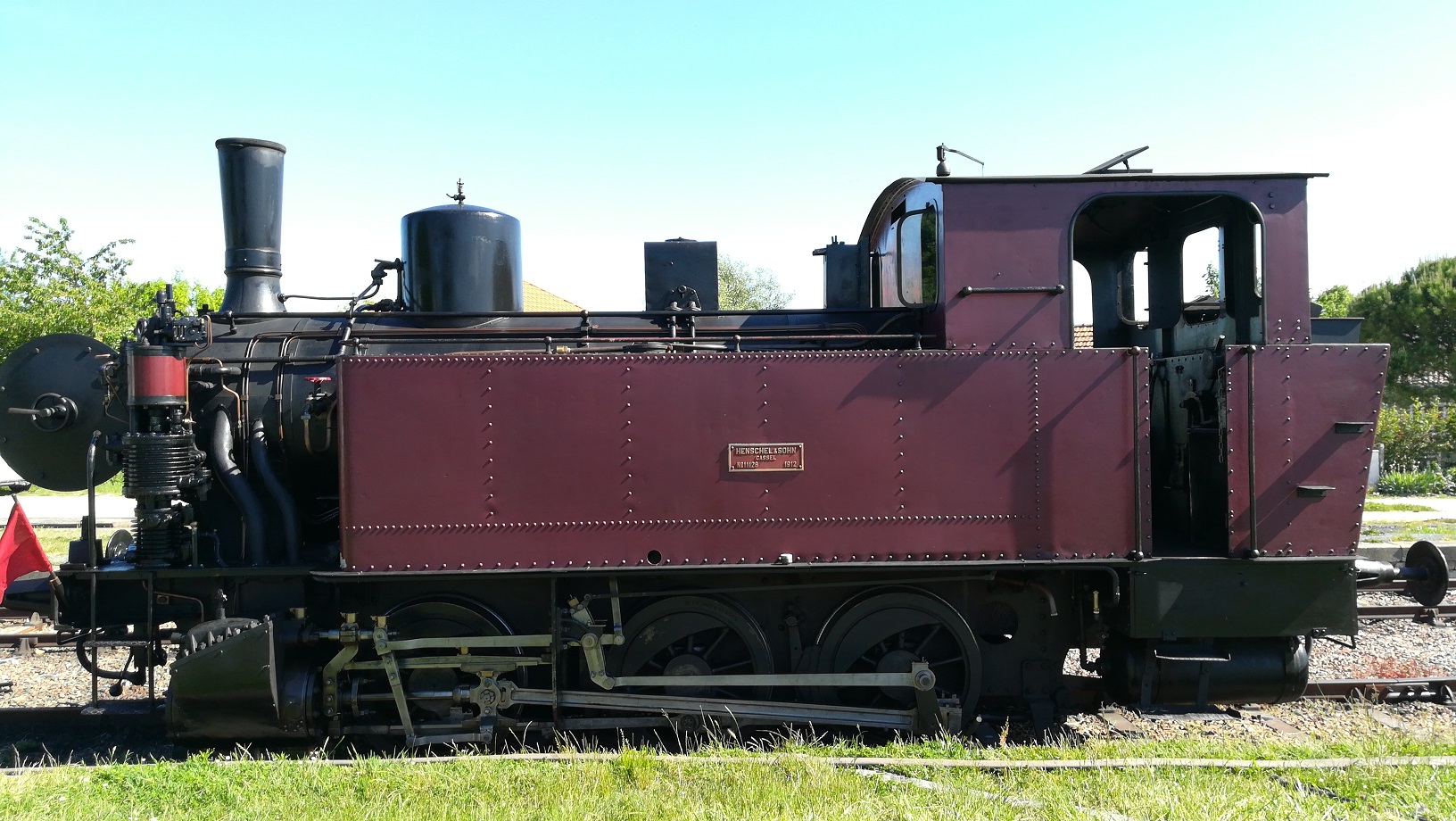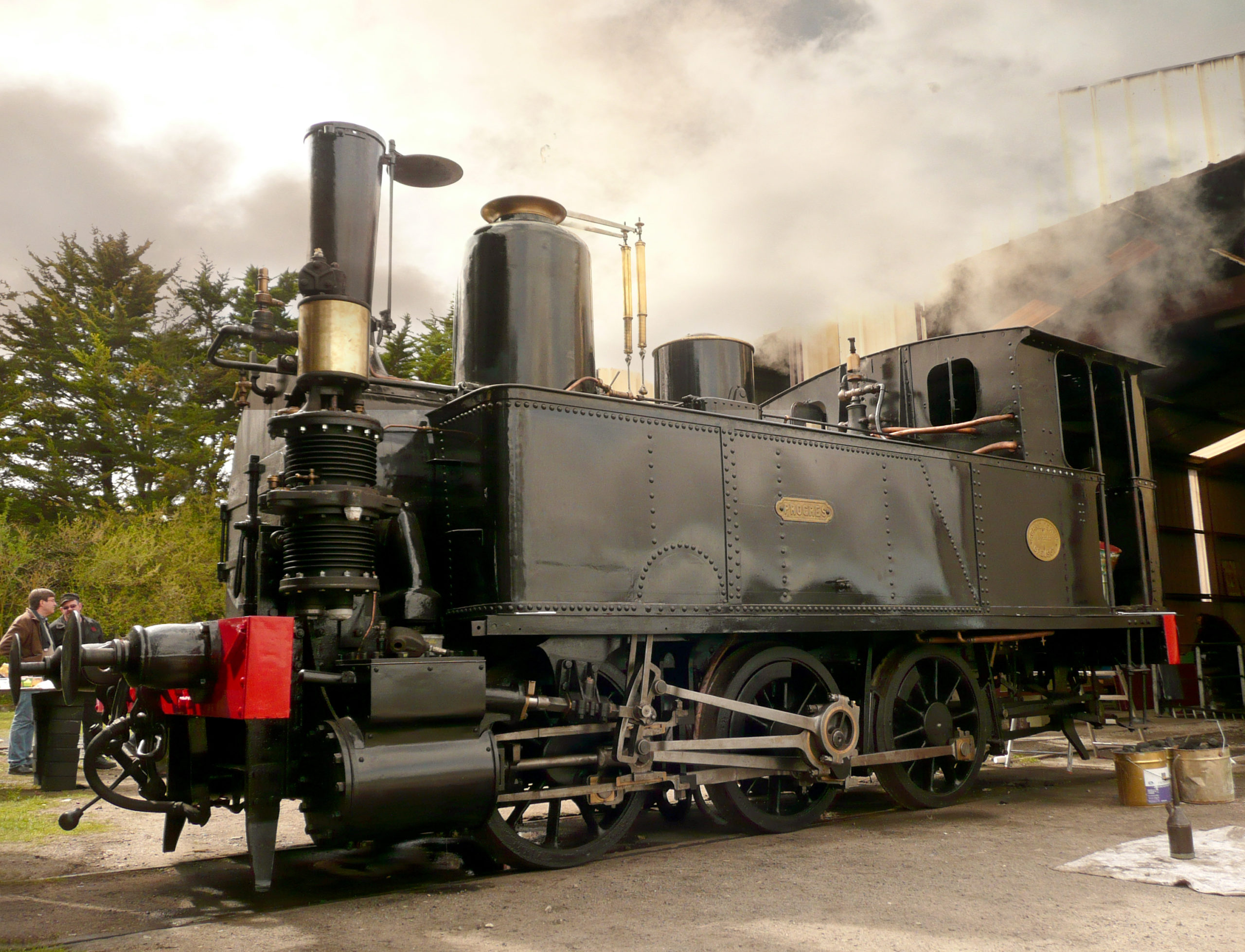
Steam engines
Unlike a diesel locomotive, which starts in the same way as a car, a steam engine needs time to build up steam pressure. Its enormous size means that it takes a long time for the boiler to reach a uniform heat. Trying to rush this can have serious consequences! This means that our volunteers have to arrive 4 hours before the train is due to leave in order to light a fire in the firebox and feed it slowly with wood then coal so that the temperature builds up gradually. Only when a uniform temperature is reached and steam pressure is at 11 bars, is the engine ready to pull the train. This is why steam engines are not able to pull any trains that leave before 11:00am. Similarly, in the evening the fire must be put out and the smokebox cleaned before volunteers can go home. So steam engines stop running at 5:00pm.
HENSCHEL 030T
Built by : HENSCHEL
STRMTG certified : Yes
Listed as a historic monument: No
Condition : Operational
Entered service : 1912
Weight : 28 T
Power : 400HP
Arrived at Chaillevette : 1984
Returned to service : 2015
Owned by : Trains & Traction

Japy, founded in 1777, was a successful industrial dynasty up until 1979 when they went into liquidation. Their most well-known product was the renowned Japy typewriter. In 1912, the Japy factory in Fesches-le-Châtel (Doubs) took delivery of a Henschel locomotive type 030T which was built at Kassel in Germany. Henschel was at the time one of the world’s largest manufacturers of steam locomotives.
Our engine worked on the Japy industrial branchline pulling either train of raw materials arriving at the factory or trucks loaded any of the huge variety of goods produced by Japy: enamelled cooking pots, pumps, typewriters, or petrol engines and mechanical parts for Peugeot were all made there. Between 1915 and 1940 our engine also pulled trains loaded with helmets for the army.
During the Second World War, the locomotive was confiscated by the enemy. It returned to the factory in 1946 after the war ended. It was decommissioned in 1966 and sold in the same year to a scrap metal merchant in Audincourt, Doubs. Roger Bras from Espalion, a knowledgeable enthusiast spotted the engine and bought it to add to his collection. The engine was acquired by Trains & Traction in 2008 and the engine arrived at Chaillevette in 2010. In 2015, after a break of 49 years, the Henschel was back on the railway much to the delight of our passengers!

SCHNEIDER N°3 “Progrès”
Built by : SCHNEIDER le Creusot
STRMTG certified : Yes
Listed as a historic monument : Yes
Condition : Operational
Entered service : 1891
Operational weight: 26T
Power : 350 HP
Arrived at Chaillevette : 1984
Returned to service : 2004
Owned by: Département de la Charente-Maritime
The Schneider 030 T was built by the Schneider du Creusot Company in 1891. It was one of a series of 4 identical locomotives and wears the number 3. The 030T ran for more than 60 years on a 13km stretch of line linking St Victor (42) and Cours (69), part of the network run by the “Société des Chemins de fer de St Victor à Cours”. Steam engines were no longer used after 15 April 1961 and on 31 January 1969 the final train ran on the line.
Upon the railway’s closure, engines number 3 and 4 were bought by Mr Gouverneyre from Chambost-Alliere, a scrap dealer who loved fine things. The engines would spend the next 14 years sheltered from bad weather in a hangar on his property. In 1981, the newly founded Seudre Tourist Railway was looking for a steam engine to pull their trains and they bought both engines in 1983. Whilst Number 3 remains at Chaillevette, Number 4 “Trambouse” was sold to Mr Bras, a collector from Espalion to fund the initial restoration work on Number 3.
It would be another twenty long years before Number 3 “Progrès” was seen once again at the front of a train. Today, however, this timeless engine continues to delight passengers aboard the “Train des Mouettes”.